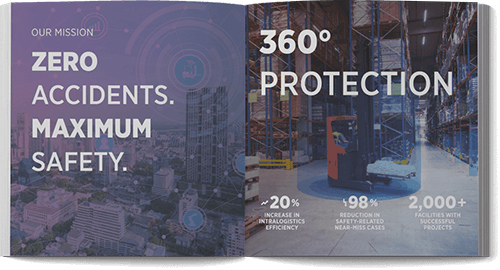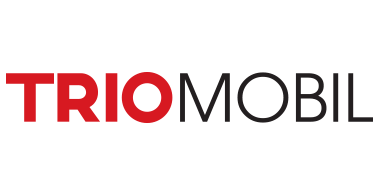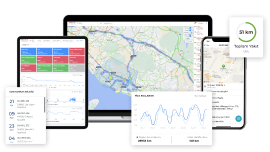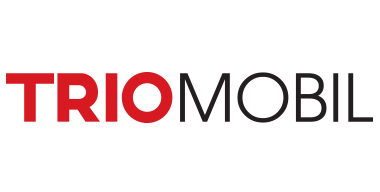The health sector is one of the sectors where we can see the widest examples of the numerous benefits that technology provides to human life. The application of the latest trends and technologies to this sector and the production of new solutions day by day have led to great development, and change for individual and social health. Especially the difficulties brought by the pandemic period have increased the demand for this change and development, but also caused the deficiencies and sensitivities in this sector to be seen more clearly. Presented as a solution to a number of problems that have accompanied this industry throughout history, IoT technologies have greater potential than ever to improve and accelerate healthcare operations and drive cost and efficiency improvements.
“More than 60% of medical organizations worldwide are already implementing or researching IoT solutions in healthcare. In the coming years, the number of patients and professionals in healthcare using IoT-connected devices for health monitoring is expected to increase significantly.”
In this article, we will be talking about the impact, benefits and uses of IoT technology on the health sector.
Healthcare Solutions with Artificial Intelligence and IoT Technologies
By monitoring critical equipment with artificial intelligence and IoT technologies, the collected data can be analyzed and processes can be managed in a more controlled, productive and economical way.

Healthcare Sector on the Path to Digital Transformation
In addition to the comprehensive data recording and analysis it provides, the launch of new healthcare products integrated with IoT indicates that the use of IoT technology in the healthcare market will increase with great momentum and high investments will be made.

According to Grand View Research, the global IoT market size was valued at approximately $5,800 million in 2014 and is projected to reach $14,660 million by 2022. It is estimated that the annual growth rate will show an improvement of 11.0% between 2017 and 2022.
Developing trends with digital transformation projects, Artificial Intelligence, and IoT technologies have brought along digitalization opportunities in new areas of use in the healthcare sector. With Artificial Intelligence and IoT technologies, it has become possible to access real-time data and analyze these data to facilitate the work of healthcare professionals, to provide instant service to patients, and to track personnel, assets, and other resources. Thanks to the scalability and operational efficiency provided by these technologies, processes such as diagnosis, treatment, pre, and post-treatment healthcare follow-up, which are vital in this sector, progress faster, error-free, and in a controlled manner.
In order to improve the comfort, convenience, safety, and more of both patients and employees, creative solutions are continued to be produced day by day by using the building blocks of digital transformation.
Benefits of IoT Technologies in Healthcare
We can list the benefits of IoT technologies on health services as follows;
- With IoT, patients can be monitored in real-time so that any disease can be detected and treated before it spreads or becomes serious. At the same time, access to care for patients is facilitated, the quality of care is increased, and most importantly, the cost of care is reduced.
- IoT ensures that data is collected accurately, reducing errors, waste, and system costs, helping to make effective decisions as well as providing smooth medical operations.
- Thanks to the Internet of Things, a digital identity is created for each person. By recording, querying, and monitoring personalized health data, it is possible to use the data not only in the medical device or health clinic, where the data is produced but also by services, devices, and individuals at any point required.
- In addition to these, the division of labor among the employees can be organized more effectively, also, labor and time efficiency can be achieved by monitoring the personnel and assets in the health unit.
IoT Applications in Healthcare Industry
Personnel and Asset Tracking
Known as real-time location tracking, the RTLS system allows both to increase employee productivity in the healthcare industry and to gain unprecedented visibility into assets and operations. Thus, better customer experiences are offered to patients, and the quality of service of healthcare personnel is increased. The ability to track the location of assets, employees, patients, and visitors reduces costs and improves clinical outcomes.
Telemedicine
Thanks to the IoT-supported telemedicine application, known as online health services, patients can communicate with their doctors faster and provide more useful information flow via video conference. This remote medical assistance system, established between patients and doctors, has become very common recently, in order to prevent the time and cost of visiting a doctor or possible risk of contamination in face-to-face doctor visits.
Patient Monitoring
IoT-powered healthcare devices, wearable technology, and data access allow doctors to more precisely monitor patients and provide more informed treatment. Because the data generation, collection, storage, and process management provided by the IoT is very fast, healthcare professionals adopt smart health solutions, make data-based decisions and apply treatments according to the data they obtain, thus reducing the margin of error to zero. It provides the opportunity of "the right treatment to the right person at the right time" by constantly monitoring the patient's health condition. At the same time, real-time monitoring via connected devices can help prevent heart failure, diabetes, asthma attacks, etc. It can save lives in medical emergencies.
Medical Devices
In addition to the use of medical devices by health institutions and health personnel, it is also very common for use by society in daily life. Huge health data, which grows exponentially, is created due to both the simple health devices that people use at home and the services provided in health institutions. For instance; Data collected from thermometers, sphygmomanometers, or heart sensors can be used to monitor the patient's health status.
The storage and analysis of these collected health data and the ability to define emergency response for necessary situations provide significant gains in personal health services, especially in terms of time. Thanks to the medical devices that collect and store important information about the health status of the user (heart rate, blood pressure, pulse, blood sugar, etc.), precautions can be taken before any problem occurs, and the health of the user is secured.
In summary, thanks to the developments in Industry 4.0 and IoT, the potential to create a positive revolution in the healthcare industry is increasing day by day. Hospitals, clinics, and other healthcare services will continue to leverage the connectivity of the IoT to improve patient comfort, facilitate physician decision-making, and make healthcare organizations safer for both patients and staff.










